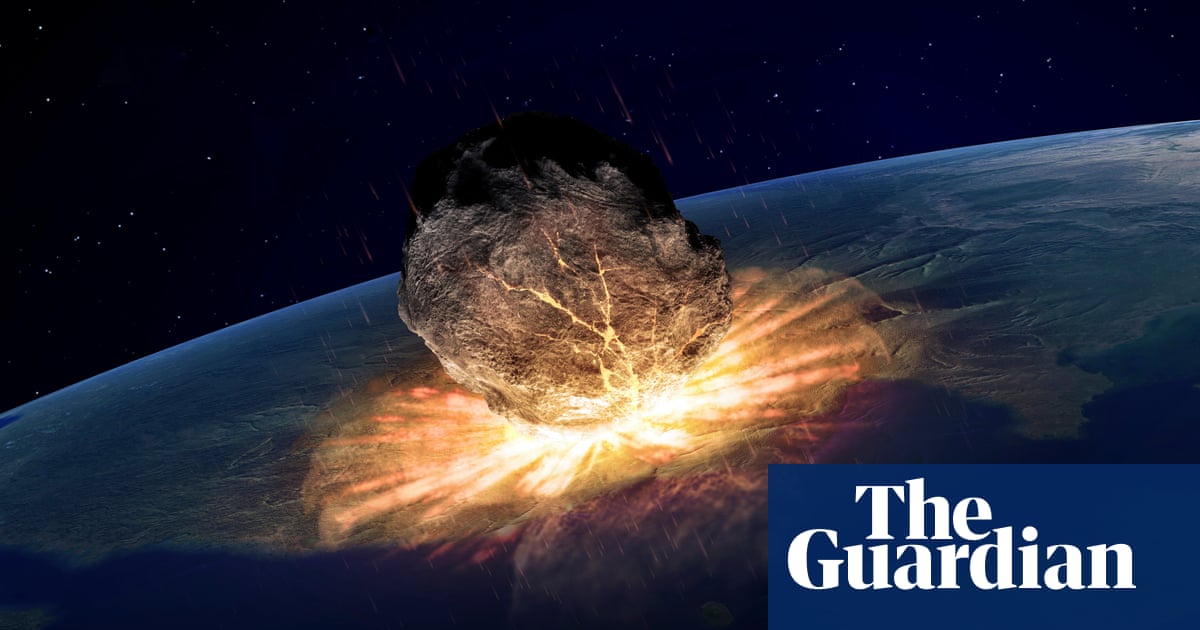It might not be the world-ending apocalypse foretold in the Netflix drama Don’t Look Up, but astronomers have significantly upped the odds of a direct hit from a giant asteroid currently hurtling towards Earth.
According to Nasa’s Center for Near Earth Object Studies (Cneos), the odds of a strike in 2032 by the space rock that goes by the somewhat unassuming name 2024 YR are calculated to be 2.3% – a one-in-43 chance.
Barely a week ago, the European Space Agency (Esa) gave the asteroid a 1.3% chance of hitting the planet on 22 December that year, the day it will make its closest approach to Earth. Or, phrased another way, it had an almost 99% probability of passing by without incident.
At up to 300ft (90m) in width, according to Nasa-funded skywatchers who spotted it from a telescope in Chile just before new year, the object is roughly the same size as the Tunguska asteroid that flattened about 830 square miles (2,150 sq km) of remote Siberian forest when it exploded in 1908.
Astronomers, however, are urging Earth dwellers not to panic, even though 2024 YR4 has rocketed to the top of official impact risk lists on both sides of the Atlantic, and has the rare rating of three on the Torino Impact Hazard Scale that ranges from a no-risk zero to a civilization-ending 10.
Fluctuations in the chances of a strike so far out from an object’s arrival are common, and in a YouTube video entitled “How asteroids go from threat to no sweat”, Esa explains that the likelihood of 2024 YR4 ever striking the planet will drop to virtually zero once updated data on speed and trajectory is received in the coming weeks and months.
The planetary defense coordination office of Nasa, the US space agency, agrees.
“There have been several objects in the past that have risen on the risk list and eventually dropped off as more data have come in,” researcher Molly Wasser said in a statement.
“New observations may result in reassignment of this asteroid to zero as more data come in.”
Colin Snodgrass, professor of planetary astronomy at the University of Edinburgh, told the Guardian last week: “Most likely this one will pass by harmlessly.
“It just deserves a little more attention with telescopes until we can confirm that. The longer we follow its orbit, the more accurate our future predictions of its trajectory become.”
Other recent similar scares would appear to reinforce the message.
The asteroid 99942 Apophis, discovered in 2004 and larger than the Eiffel Tower, was once given a rating of four on the Torino scale, but was eventually calculated to be no threat to Earth on any of its close passes for at least the next 100 years.
Yet even if 2024 YR4 continues on towards Earth with a high chance of impact, the success of Nasa’s Dart mission in 2022, in which a spacecraft was deliberately crashed into an asteroid the size of a football stadium and altered its trajectory, gives grounds for optimism for the future of humanity.
“This asteroid is of the scale that a mission like Dart could be effective, if required, so we have the technology and it has been tested,” Snodgrass said.
Article by:Source: Richard Luscombe
















